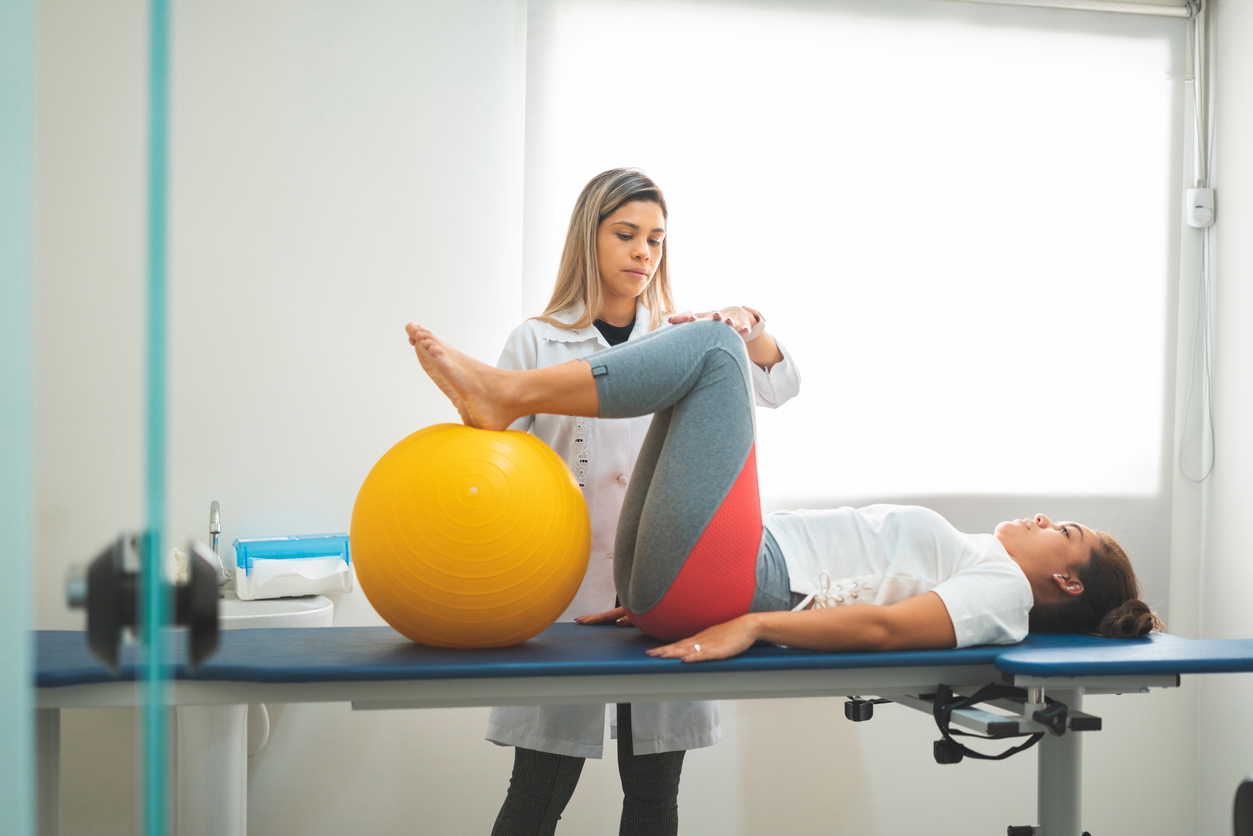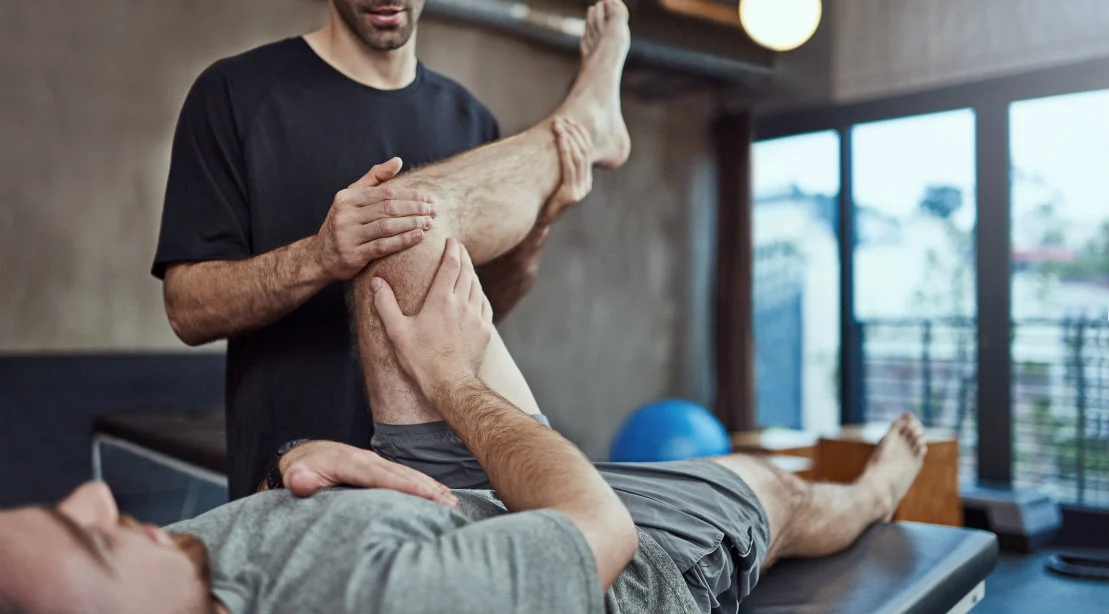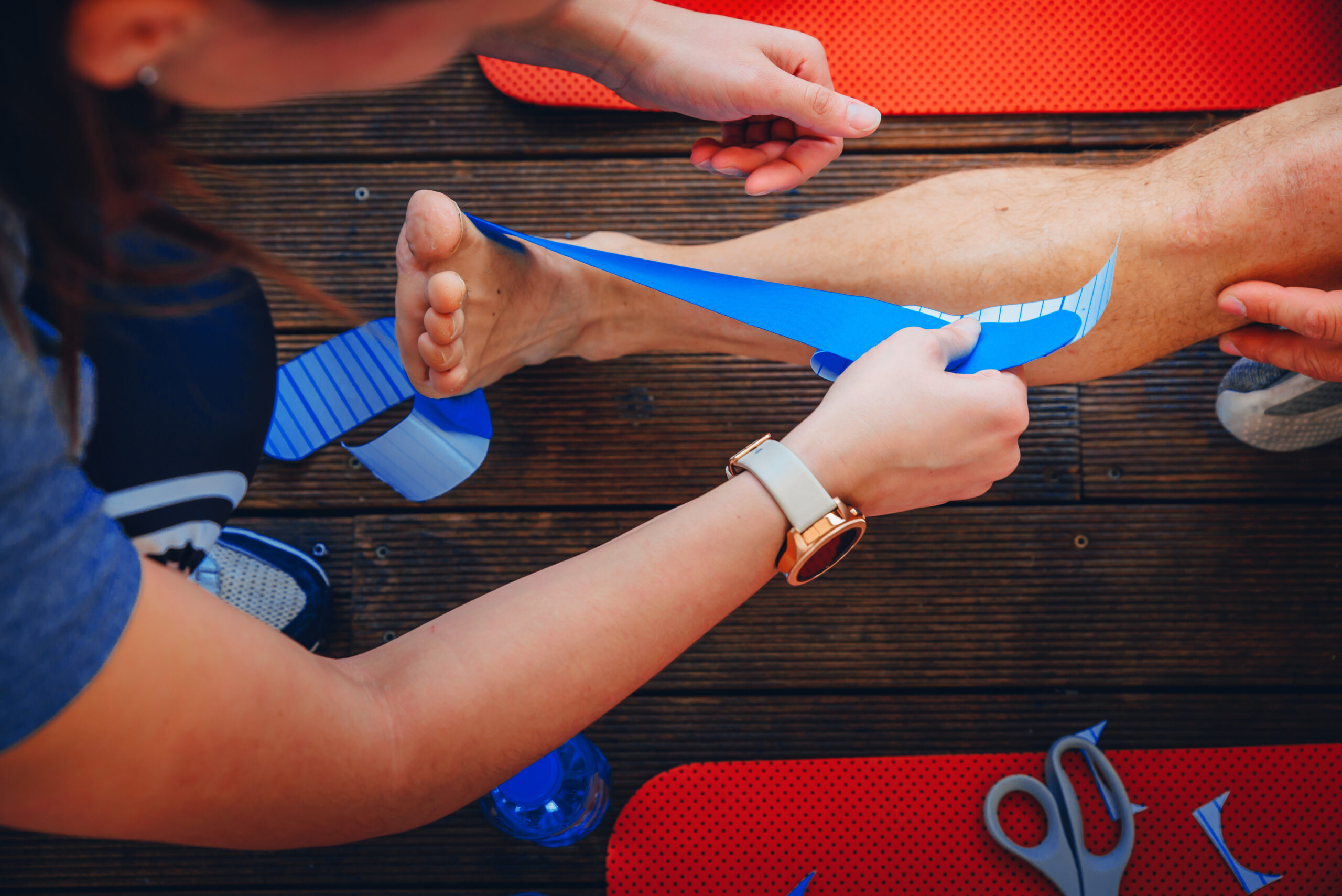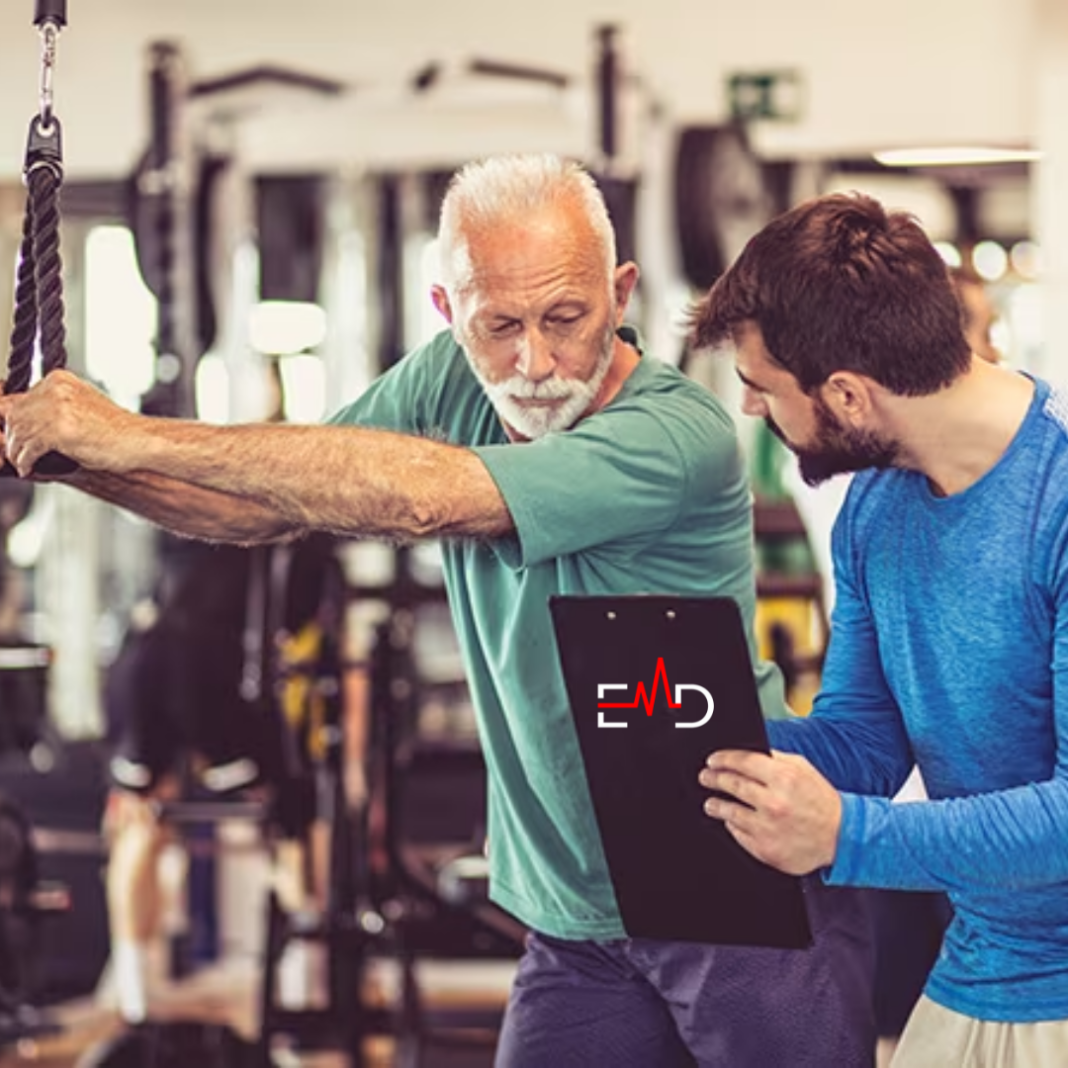Exercise Daily – Sports injuries can be frustrating and debilitating for athletes, often leading to significant downtime and a disruption in their athletic pursuits. However, with advancements in the field of physical therapy, athletes can now benefit from specialized care that helps them recover faster and get back to their sport with improved performance. Let’s see the various benefits of physical therapy for sports injuries, highlighting its role in both immediate recovery and long-term injury prevention.
Physical therapy plays a crucial role in the treatment and rehabilitation of sports injuries. Whether you’re a professional athlete, a weekend warrior, or someone who enjoys recreational sports, physical therapy can offer numerous benefits for recovery and overall well-being.
Sports Injuries
1. Types of Sports Injuries
Sports injuries can vary widely, ranging from acute traumas like fractures and sprains to overuse injuries such as tendonitis and stress fractures. Each type of injury requires a tailored approach to treatment, making physical therapy an essential component of the recovery process.
2. Common Causes of Sports Injuries
Sports injuries often result from factors such as improper training techniques, inadequate warm-ups, lack of conditioning, and even the choice of inappropriate footwear or equipment. Understanding the root causes helps physical therapists design comprehensive treatment plans.

The Role of Physical Therapy in Sports Injury Recovery
1. Immediate Treatment and Pain Management
When an athlete sustains an injury, immediate treatment is crucial to minimize pain and inflammation. Physical therapists use various techniques like ice therapy, ultrasound, and electrical stimulation to alleviate discomfort and kickstart the healing process.
2. Restoring Range of Motion and Flexibility
After an injury, it’s essential to restore the affected joint’s range of motion and flexibility. Physical therapists employ targeted exercises and manual therapies to achieve this, preventing the formation of scar tissue and enhancing mobility.
3. Strengthening and Conditioning
Building strength and conditioning in the injured area is a fundamental aspect of sports injury recovery. Physical therapists create personalized exercise programs that progressively challenge the athlete’s muscles and promote tissue healing.
4. Injury-Specific Rehabilitation Exercises
Every sports injury is unique, and physical therapists design rehabilitation exercises tailored to the specific injury and the athlete’s sport. These exercises not only aid recovery but also prevent re-injury.
Preventing Future Injuries through Physical Therapy
1. Identifying Weaknesses and Imbalances
Physical therapists perform detailed assessments to identify any weaknesses or imbalances that could lead to future injuries. Addressing these issues through targeted exercises helps reduce the risk of recurrent injuries.
2. Developing Customized Exercise Programs
Once weaknesses are identified, physical therapists create customized exercise programs to strengthen the athlete’s overall musculoskeletal system. These programs are designed to enhance performance and minimize the risk of future injuries.
3. Education on Proper Techniques
Education plays a pivotal role in injury prevention. Physical therapists educate athletes on proper techniques for warming up, cooling down, and executing sports-specific movements safely.
4. Injury Prevention Strategies
Beyond individualized exercise programs, physical therapists also implement injury prevention strategies tailored to the athlete’s sport. This proactive approach helps athletes stay in peak condition and reduce the likelihood of injuries.

Mental and Emotional Support in Sports Injury Rehabilitation
Physical therapy extends beyond physical recovery. Therapists provide valuable mental and emotional support to athletes during their rehabilitation journey, helping them cope with the challenges of recovery and maintain a positive mindset.
Mental and emotional support play crucial roles in sports injury rehabilitation. Sustaining an injury can be a challenging and distressing experience for athletes, as it can lead to physical limitations, disruption of training routines, and a sense of loss and frustration. Here are some key aspects of providing mental and emotional support during sports injury rehabilitation:
1. Understanding and Empathy
Coaches, trainers, and medical professionals should demonstrate understanding and empathy towards the injured athlete. Listening to their concerns and acknowledging their emotions helps create a supportive environment.
2. Education and Communication
Providing clear and honest information about the injury, the rehabilitation process, and the expected timeline for recovery can help manage expectations and reduce anxiety.
3. Access to Mental Health Professionals
In addition to physical rehabilitation, athletes may benefit from working with sports psychologists or mental health professionals who specialize in sports-related issues. These professionals can help athletes cope with the emotional impact of the injury and develop strategies to maintain mental well-being during the recovery period.
4. Goal Setting
Setting realistic and achievable goals during the rehabilitation process can give the injured athlete a sense of purpose and progress, which is essential for maintaining motivation.
5. Positive Reinforcement
Offering positive reinforcement and praise for the athlete’s efforts and progress, no matter how small, can boost their confidence and help them stay committed to the rehabilitation process.
6. Mindfulness and Relaxation Techniques
Introducing athletes to mindfulness practices, deep breathing exercises, and relaxation techniques can help them manage stress and anxiety during their recovery.
7. Social Support
Encouraging injured athletes to stay connected with their teammates and support system can help combat feelings of isolation and keep them engaged with their sport in some capacity.
8. Visualizations and Mental Imagery
Guiding athletes through mental imagery exercises where they visualize successful performances and the healing process can positively impact their physical recovery and mental resilience.
9. Coping Strategies
Teaching athletes effective coping strategies to deal with setbacks, pain, and frustration can enhance their ability to manage the challenges of the rehabilitation journey.
10. Reintegration Plan
Preparing athletes for their return to the sport after rehabilitation is essential. Gradual reintegration, with support from coaches and medical staff, can ease the transition back into competition and reduce performance anxiety.
11. Monitoring and Assessment
Continuously monitoring the athlete’s mental and emotional well-being throughout the rehabilitation process helps identify any signs of distress early on, allowing for timely intervention if needed.

Exercise: The Key to Healing Sports Injuries
Sports injuries are a common occurrence for athletes and fitness enthusiasts alike. Whether you are a professional athlete or someone who enjoys an active lifestyle, getting injured during physical activity can be frustrating and painful.
1. Promoting Blood Flow and Healing
Engaging in controlled and appropriate exercise helps promote blood flow to the injured area. Increased blood circulation brings essential nutrients and oxygen to the injured tissues, supporting the healing process and reducing recovery time.
2. Restoring Range of Motion and Flexibility
Certain types of exercises, such as stretching and gentle movements, can help restore range of motion and flexibility to the injured body part. This is crucial for regaining full function and preventing stiffness that may develop during the healing process.
3. Strengthening the Surrounding Muscles
Exercises targeted at the muscles surrounding the injured area can aid in providing support and stability during the recovery phase. Strengthening these muscles can prevent future injuries and offer protection to the healed tissue.
4. Boosting Endorphins and Mood
Engaging in exercise releases endorphins, the body’s natural feel-good hormones. These endorphins not only help alleviate pain but also contribute to a positive mood and mindset, which can be instrumental in overcoming the mental challenges of recovering from a sports injury.
Effective Exercises for Sports Injury Healing
1. Range of Motion Exercises
Perform gentle and controlled movements that focus on the injured area to improve flexibility and prevent stiffness.
2. Low-Impact Aerobic Activities
Participate in low-impact activities such as swimming, stationary cycling, or walking, as they provide cardiovascular benefits without placing excessive stress on the injured body part.
3. Strength Training
Engage in strength training exercises that target the injured area’s supporting muscles. Always start with light resistance and gradually increase as healing progresses.
4. Balance and Stability Exercises
Improve balance and stability to enhance overall body coordination and prevent future injuries.
5. Physical Therapy
Consider seeking guidance from a qualified physical therapist who can design a personalized exercise program tailored to your specific injury and recovery needs.

The Role of Physical Therapists in Sports Teams
Sports teams now recognize the significance of having physical therapists as part of their medical staff. These specialized professionals play a vital role in keeping athletes fit, healthy, and injury-free throughout the season.
The Growing Popularity of Physical Therapy for Sports Injuries
The adoption of physical therapy in sports injury rehabilitation has been steadily increasing due to its effectiveness and positive outcomes. Athletes and sports professionals alike are embracing this approach for a quicker and more comprehensive recovery.
As of my last update in September 2021, physical therapy for sports injuries was already experiencing a growing popularity, and it’s likely that this trend has continued and possibly even accelerated since then.
Sports-Specific Rehabilitation Programs
Physical therapists are developing sports-specific rehabilitation programs tailored to the unique demands of various sports. These programs focus on sport-specific movements and exercises that mimic on-field activities.
Sports-specific rehabilitation programs are tailored and specialized rehabilitation plans designed to help athletes and active individuals recover from sports-related injuries or surgeries and safely return to their respective sports or physical activities. These programs are typically developed by sports medicine professionals, such as physical therapists, athletic trainers, and sports physicians, who have expertise in both rehabilitation and sports performance.
Holistic Approach to Sports Injury Rehabilitation
Physical therapy takes a holistic approach to sports injury rehabilitation, considering not only the injured area but also the entire body. This approach ensures that athletes return to their sport with improved overall performance.
A holistic approach to sports injury rehabilitation focuses on treating the entire person, not just the injured body part. It considers the physical, mental, emotional, and social aspects of the individual to promote overall well-being and a successful recovery. This approach emphasizes the interconnectedness of the body and mind, recognizing that each aspect can impact the other.
The Advancements in Sports Physical Therapy
The field of sports physical therapy is constantly evolving, with new techniques, technologies, and research contributing to improved treatment methods. Athletes today benefit from cutting-edge approaches to injury recovery.
When to Seek Physical Therapy for Sports Injuries
Athletes should consider seeking physical therapy as soon as they experience pain or sustain an injury. Early intervention leads to better outcomes and reduces the risk of chronic issues.
Physical Therapy vs. Other Treatment Options
Compared to other treatment options, physical therapy stands out as a non-invasive and drug-free approach to sports injury rehabilitation. It addresses the root cause of the problem rather than merely masking the symptoms.
Physical therapy is a form of rehabilitation that aims to help patients improve their physical abilities, functionality, and mobility through exercises, stretches, and other therapeutic techniques. While physical therapy is beneficial for many conditions and injuries, it’s essential to consider other treatment options based on the specific medical issue, severity, and individual needs of the patient. Let’s compare physical therapy with other treatment options for various scenarios:
Musculoskeletal Injuries:
- Physical Therapy: Often effective in treating sprains, strains, fractures, and post-surgical recovery. It focuses on strengthening, flexibility, and pain management.
- Other Options: In more severe cases or when conservative treatment isn’t effective, other options may include surgery, medications, or interventions like joint injections.
Chronic Pain Management:
- Physical Therapy: Can be helpful in managing chronic pain conditions through targeted exercises, manual therapy, and patient education on pain coping strategies.
- Other Options: Depending on the condition, pain management may also include medications, nerve blocks, acupuncture, cognitive-behavioral therapy, or surgery in extreme cases.
Neurological Conditions:
- Physical Therapy: Effective in treating various neurological conditions such as stroke, Parkinson’s disease, or multiple sclerosis, focusing on improving mobility, balance, and coordination.
- Other Options: Other treatments might involve medications, assistive devices, speech therapy, occupational therapy, or even surgical interventions depending on the specific condition.
Cardiovascular Conditions:
- Physical Therapy: Useful in cardiac rehabilitation post-heart attack or heart surgery, with exercises that improve heart health and endurance.
- Other Options: Treatment for cardiovascular conditions may also include medications, lifestyle modifications, diet changes, and potentially surgical procedures.
Respiratory Conditions:
- Physical Therapy: Can be part of pulmonary rehabilitation to improve lung function and breathing techniques for conditions like chronic obstructive pulmonary disease (COPD).
- Other Options: Respiratory conditions may require medications, oxygen therapy, breathing exercises, and lifestyle changes.
Mental Health Conditions:
- Physical Therapy: May complement other treatments for mental health conditions by promoting overall well-being and reducing stress through exercise.
- Other Options: Treatment for mental health conditions often includes counseling, psychotherapy, medications, and support groups.
Sports Injuries:
- Physical Therapy: Commonly used for sports-related injuries to aid recovery, restore function, and prevent future injuries.
- Other Options: In more severe cases, surgical intervention might be necessary, and pain management strategies may be employed alongside rehabilitation.

Understanding the Long-Term Benefits of Physical Therapy
The long-term benefits of physical therapy extend beyond injury recovery. Athletes who undergo physical therapy often experience improved athletic performance, reduced risk of future injuries, and enhanced overall well-being.
Testimonials from Athletes and Sports Professionals
“Physical therapy revolutionized my approach to injury recovery. I returned to the field stronger and more confident than ever.” – John Doe, Professional Soccer Player
“Our team’s physical therapist played a critical role in keeping our players in top shape throughout the season.” – Coach Jane Smith
“I used to struggle with chronic knee pain, but physical therapy changed everything. Now I can enjoy sports without any discomfort.” – Sarah Johnson, Recreational Athlete
Conclusion
Physical therapy has emerged as a game-changer in sports injury rehabilitation. With its individualized approach, emphasis on injury prevention, and focus on long-term benefits, athletes of all levels can experience faster recovery and improved performance. Whether recovering from a minor sprain or a major trauma, seeking the expertise of a physical therapist is a wise decision for any athlete.
FAQs – The Benefits of Physical Therapy for Sports Injuries
Is physical therapy suitable for all types of sports injuries?
Physical therapy can benefit athletes with various sports injuries, regardless of the severity or type. Consultation with a physical therapist can determine the most appropriate treatment plan.
How soon should an athlete begin physical therapy after a sports injury?
It is advisable to start physical therapy as soon as possible after sustaining a sports injury. Early intervention contributes to better outcomes and speeds up the recovery process.
Are professional athletes the only ones who need physical therapy for sports injuries?
Physical therapy is beneficial for athletes of all levels, from recreational to professional. Any individual who experiences a sports-related injury can benefit from expert care.
Can physical therapy prevent future sports injuries?
Yes, physical therapy can significantly reduce the risk of future sports injuries by addressing weaknesses, and imbalances, and promoting proper techniques.
How long does the sports injury rehabilitation process typically take?
The duration of sports injury rehabilitation varies depending on the type and severity of the injury. Physical therapists work closely with athletes to ensure timely recovery.



